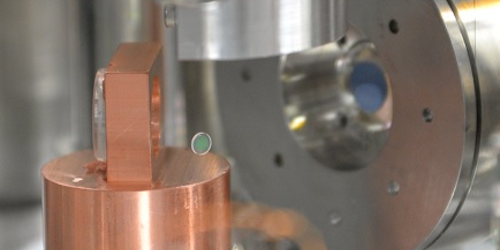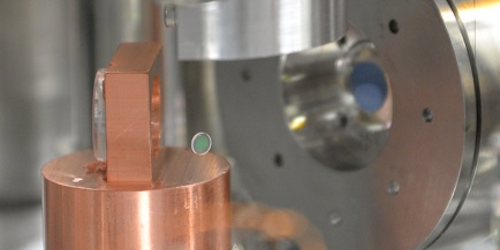Gravity of the Ultralight
Scientists first measured an “everyday” object’s gravity over two centuries ago, using a torsional balance to determine the pull that a 158-kg lead ball exerts on a weight that is 200 times lighter. Since then, researchers have measured gravity for objects as small as 90 g. They would like to determine this force for yet lighter objects, but doing so has proved tricky. Now researchers from Japan demonstrate a key element of a proposed method for making such measurements. While the technique has yet to be used to detect a tiny object’s gravity, the team says that the device should be able to measure a gravitational tug with 1000 times the sensitivity of that currently possible.
The proposed setup consists of an optical cavity made of three mirrors, one of which is freely suspended. The object of interest is suspended or placed in an oscillating structure near the cavity. As the object moves, its gravity tugs on the hanging mirror. If accurately tracked, the amplitude of the mirror’s swing could reveal the object’s gravitational pull. Nobuyuki Matsumoto at Tohoku University in Japan and colleagues have now demonstrated that they can track the motion of the moving mirror, using light from the cavity, with enough sensitivity to detect gravity for an object weighing 100 mg. The team has not implemented the complete setup or added in the object.
The team says that the sensitivity of this proposed technique, or others inspired by it, could increase further, potentially enabling scientists to probe the gravitational pull of quantum-sized objects. Such measurements, they say, could enable them to uncover the quantum nature of gravity and determine whether or not gravity is quantized.
This research is published in Physical Review Letters.
–Katherine Wright
Katherine Wright is a Senior Editor of Physics.





